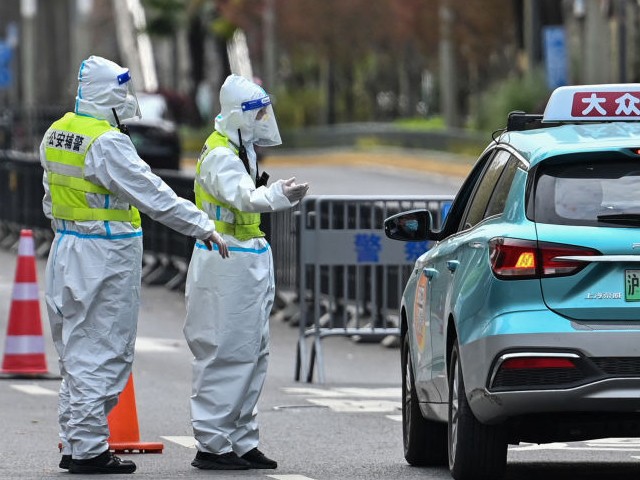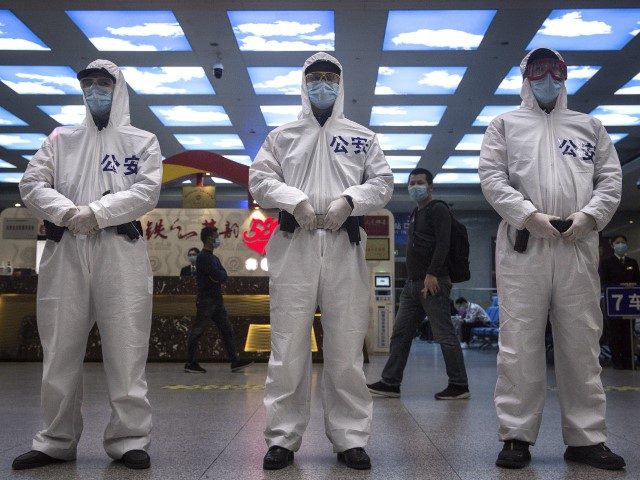China’s government indicated on Wednesday it plans to ease Shanghai’s Chinese coronavirus lockdown one day before suggesting it might impose a lockdown on Beijing, according to Chinese state media reports.
Shanghai’s municipal government on April 27 “decided to take what epidemiologists said was ‘a major step toward lifting the lockdown’ to ease restrictions in areas where COVID-19 [Chinese coronavirus] infections were stamped outside the quarantined areas,” the state-run Global Times reported.
Shanghai’s daily new cases of the disease have steadily declined over the past week, according to the newspaper, which relayed the following:
In official figures released Wednesday [April 27], Shanghai reported a 20.1 percent drop in new COVID-19 [Chinese coronavirus] cases over the last 24 hours to 1,606 confirmed cases and 11,956 silent carriers, marking its fourth consecutive day of declines.
Zhao Dandan, a deputy director of the Shanghai Municipal Health Commission, said at Wednesday’s press briefing that 51 million tests were conducted in the past five days, and the rate of positive cases has been gradually dropping.
Areas that have been declared to have stamped out viral infections outside the quarantined areas could see some easing of restrictions and control measures.
While Shanghai seemingly heads toward an easing of its total lockdown, in place since April 5, a separate report by the Global Times on April 28 suggested Chinese Communist Party officials may soon impose a city-wide lockdown order on Beijing to contain a local Chinese coronavirus outbreak. The article revealed that certain sections of Beijing were already under limited lockdown orders as of Thursday. The Communist Party-run newspaper described the affected residential areas as “temporary control zones.”

Police officers wearing protective gear control access to a tunnel in the direction of Pudong district in lockdown as a measure against the Covid-19 coronavirus, in Shanghai on March 28, 2022. (Photo by Hector RETAMAL / AFP) (Photo by HECTOR RETAMAL/AFP via Getty Images)
The Global Times relayed conditions at these sites on April 28, writing:
To contain the spread of the epidemic and protect the health and safety of the people, the temporary control zones have been dynamically adjusted based on the judgment of the epidemic control and prevention team.
The two newly added areas cover several residential areas and one of Beijing’s largest construction material markets.
Residents in the temporary control area are not allowed to leave the area, and residents in the community will strictly implement prevention and control measures such as scanning codes, temperature measurement and registration, and will not be allowed to leave the community if it is not necessary.
Beijing’s latest outbreak of the Chinese coronavirus began around mid-April. The national capital, which has an estimated population of 21.3 million, has recorded 142 new cases of the disease since April 22, according to the Global Times report on April 28.
“On Wednesday [April 27] alone, 48 new local confirmed [symptomatic] cases and two asymptomatic cases were reported in the whole of Beijing,” the newspaper observed.
Shanghai’s latest epidemic of the Chinese coronavirus began in early March. The metropolis of roughly 26 million people, which is China’s most densely populated city, launched a mass testing program for the Chinese coronavirus on March 28. The scheme forced one-half of the city to lock down for five days at a time from March 28 to April 5. Hours before the testing lockdown was set to expire on April 5, Shanghai’s government shocked the city’s populace by announcing that the entire metropolis would be expected to observe indefinite stay-at-home orders. The surprise lockdown edict has remained in place since then.
Beijing’s enforcement of “temporary control zones” in recent days followed the city’s government announcing mass Chinese coronavirus testing schemes for nearly 20 million residents starting on April 25.

COMMENTS
Please let us know if you're having issues with commenting.